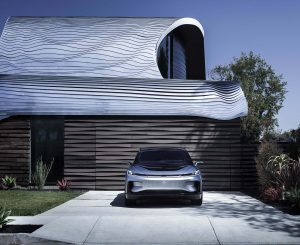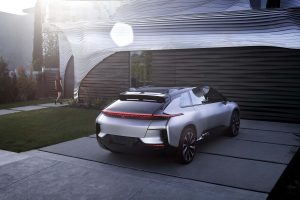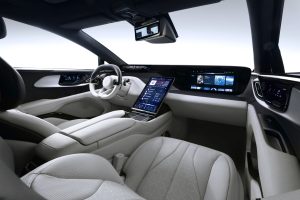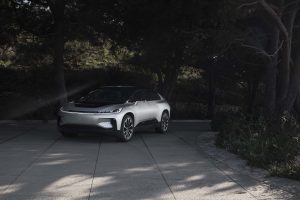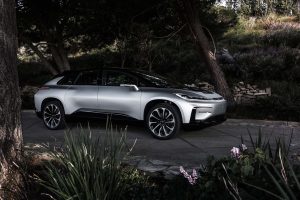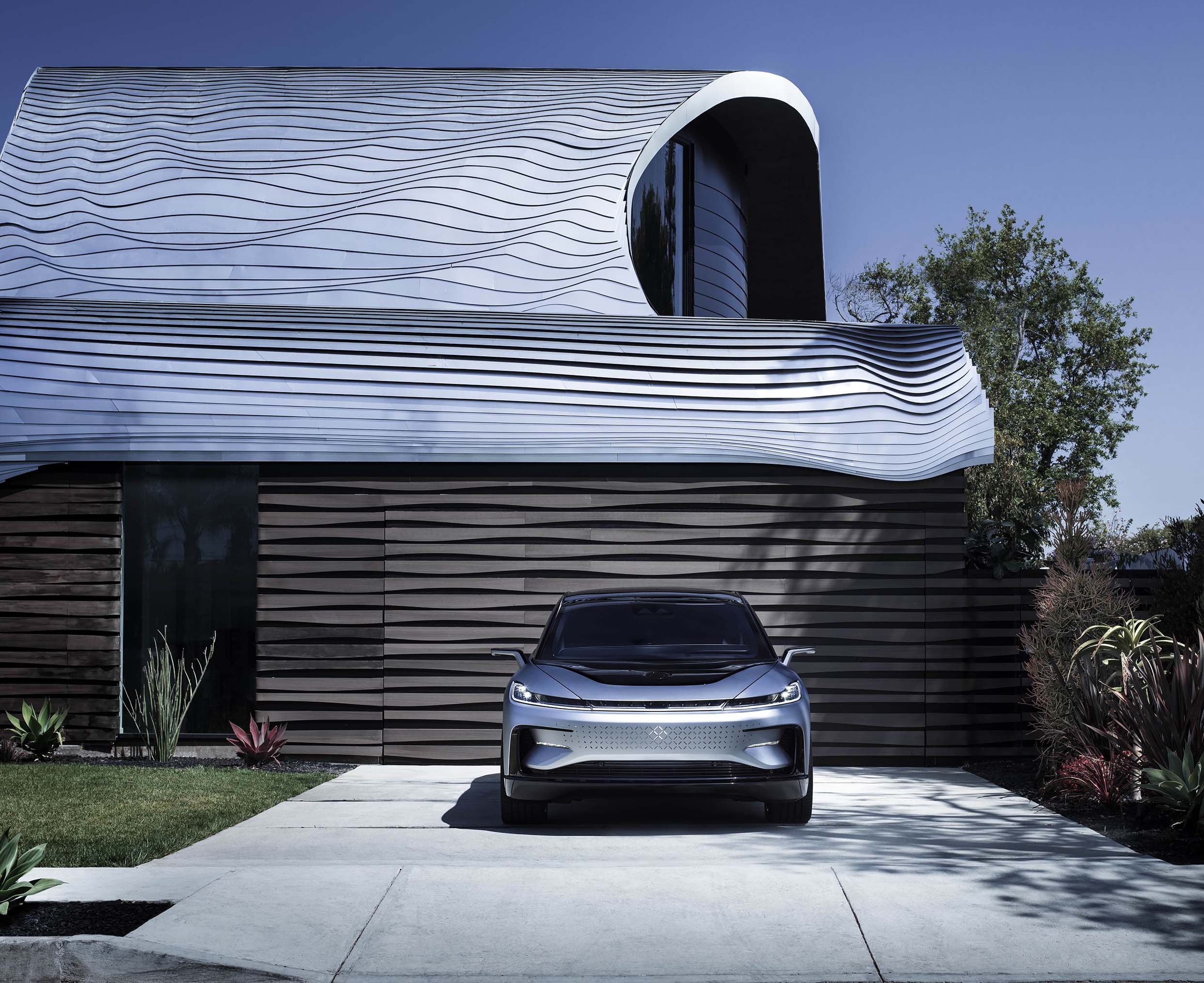
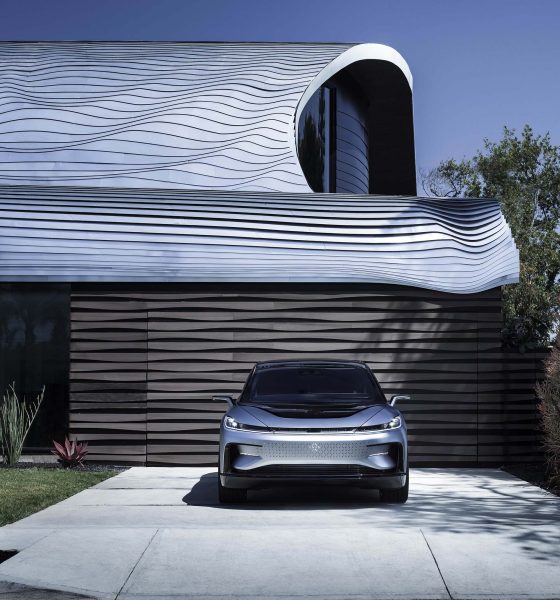
Investor's Corner
Faraday Future defies the odds, will start vehicle production in March
Faraday Future has announced that it has acquired the necessary funding to begin vehicle production and will do so next month.
Investors and Faraday Future reservation holders have become pessimistic over the past two years. Not only has the company been stalled in its efforts to begin production of the FF 91 SUV, but its stock has plummeted as customers have lost hope in receiving the vehicle they originally ordered. Yet it seems Faraday has achieved the impossible, pulling out of its financial tailspin and heading to production next month.
Faraday said it acquired a total of $135 million in funding, allowing for its vehicle production after five long years of waiting. The FF 91 SUV will begin production in March and will begin deliveries to customers in April. Faraday did not specify how many vehicles would be produced or which customers would be receiving vehicles first.
Such a dramatic shift in Faraday’s trajectory stems from its last effort funding round and new corporate leadership that seems dead set on recovering what many assumed to be a sinking ship. Faraday Future CEO Xuefeng Chen (XF, as he is titled in the press release) follows previous CEO Carsten Breitfeld who resigned after a board review of his leadership since IPO. Along with the most recently secured funding, the CEO will also be looking to expand outstanding shares to drive more investment into the business; a vote will be held on the matter in a meeting with investors at the end of this month.
Faraday Future’s FF 91 is the $180,000 SUV that the company hopes will redefine the luxury EV segment. “Competing with Ferrari, Maybach, Rolls Royce, and Bentley, as the only next-gen Ultimate Intelligent TechLuxury EV product, the FF 91 Futurist puts forward a unique and intelligent EV experience with extreme technology, an ultimate user experience,” says the press release, but looking to the vehicle’s actual specs, it certainly has the chance to shake things up.
- Credit: Faraday Future
- Credit: Faraday Future
- Credit: Faraday Future
- Credit: Faraday Future
- Credit: Faraday Future
- Credit: Faraday Future
The FF 91 is a long-wheelbase luxury vehicle that performs with incredible performance specifications. Its tr-motor system produces a combined 1050 horsepower, shooting the SUV to 60mph in just 2.39 seconds. However, with a refined interior experience, fitted with rear captain’s chairs and fine leather upholstery, the vehicle’s target market is more Oceans Eleven, less Miami Vice.
Through the Faraday Future “Dynamic Vehicle Control” system, drivers benefit from semi-active dampers that will smooth the vehicle’s ride, four-wheel-steering that makes the sizable vehicle nimble and maneuverable, and thanks to its dual motor system in the back, rear torque-vectoring ensures power makes it to the ground. But thanks to the vehicle’s impressive aerodynamic shape, these features don’t come at the detriment of range, with the FF 91 still capable of 381 miles on a single charge thanks to its sizable 130 kWh battery.
Faraday has not specified how fast the vehicle charges but notes on its website that the FF 91 will gain 200 miles of range in just 30 minutes of charging.
With such a remarkable turnaround from just late last year and an astonishingly quick start of production, optimism is finally returning to the Faraday Future brand. Yet many still have good reason to be cautious about the fledgling brand. Hopefully, by ultimately delivering on its initially promised vehicles, Faraday can start to repair its cultural cache and begin to work on ramping production for what could be a fantastic vehicle.
Disclosure: William Johnson does not own Faraday Future stock.
What do you think of the article? Do you have any comments, questions, or concerns? Shoot me an email at william@teslarati.com. You can also reach me on Twitter @WilliamWritin. If you have news tips, email us at tips@teslarati.com!

Investor's Corner
Tesla stock closes at all-time high on heels of Robotaxi progress

Tesla stock (NASDAQ: TSLA) closed at an all-time high on Tuesday, jumping over 3 percent during the day and finishing at $489.88.
The price beats the previous record close, which was $479.86.
Shares have had a crazy year, dipping more than 40 percent from the start of the year. The stock then started to recover once again around late April, when its price started to climb back up from the low $200 level.
This week, Tesla started to climb toward its highest levels ever, as it was revealed on Sunday that the company was testing driverless Robotaxis in Austin. The spike in value pushed the company’s valuation to $1.63 trillion.
Tesla Robotaxi goes driverless as Musk confirms Safety Monitor removal testing
It is the seventh-most valuable company on the market currently, trailing Nvidia, Apple, Alphabet (Google), Microsoft, Amazon, and Meta.
Shares closed up $14.57 today, up over 3 percent.
The stock has gone through a lot this year, as previously mentioned. Shares tumbled in Q1 due to CEO Elon Musk’s involvement with the Department of Government Efficiency (DOGE), which pulled his attention away from his companies and left a major overhang on their valuations.
However, things started to rebound halfway through the year, and as the government started to phase out the $7,500 tax credit, demand spiked as consumers tried to take advantage of it.
Q3 deliveries were the highest in company history, and Tesla responded to the loss of the tax credit with the launch of the Model 3 and Model Y Standard.
Additionally, analysts have announced high expectations this week for the company on Wall Street as Robotaxi continues to be the focus. With autonomy within Tesla’s sights, things are moving in the direction of Robotaxi being a major catalyst for growth on the Street in the coming year.
Elon Musk
Tesla needs to come through on this one Robotaxi metric, analyst says
“We think the key focus from here will be how fast Tesla can scale driverless operations (including if Tesla’s approach to software/hardware allows it to scale significantly faster than competitors, as the company has argued), and on profitability.”

Tesla needs to come through on this one Robotaxi metric, Mark Delaney of Goldman Sachs says.
Tesla is in the process of rolling out its Robotaxi platform to areas outside of Austin and the California Bay Area. It has plans to launch in five additional cities, including Houston, Dallas, Miami, Las Vegas, and Phoenix.
However, the company’s expansion is not what the focus needs to be, according to Delaney. It’s the speed of deployment.
The analyst said:
“We think the key focus from here will be how fast Tesla can scale driverless operations (including if Tesla’s approach to software/hardware allows it to scale significantly faster than competitors, as the company has argued), and on profitability.”
Profitability will come as the Robotaxi fleet expands. Making that money will be dependent on when Tesla can initiate rides in more areas, giving more customers access to the program.
There are some additional things that the company needs to make happen ahead of the major Robotaxi expansion, one of those things is launching driverless rides in Austin, the first city in which it launched the program.
This week, Tesla started testing driverless Robotaxi rides in Austin, as two different Model Y units were spotted with no occupants, a huge step in the company’s plans for the ride-sharing platform.
Tesla Robotaxi goes driverless as Musk confirms Safety Monitor removal testing
CEO Elon Musk has been hoping to remove Safety Monitors from Robotaxis in Austin for several months, first mentioning the plan to have them out by the end of 2025 in September. He confirmed on Sunday that Tesla had officially removed vehicle occupants and started testing truly unsupervised rides.
Although Safety Monitors in Austin have been sitting in the passenger’s seat, they have still had the ability to override things in case of an emergency. After all, the ultimate goal was safety and avoiding any accidents or injuries.
Goldman Sachs reiterated its ‘Neutral’ rating and its $400 price target. Delaney said, “Tesla is making progress with its autonomous technology,” and recent developments make it evident that this is true.
Investor's Corner
Tesla gets bold Robotaxi prediction from Wall Street firm
Last week, Andrew Percoco took over Tesla analysis for Morgan Stanley from Adam Jonas, who covered the stock for years. Percoco seems to be less optimistic and bullish on Tesla shares, while still being fair and balanced in his analysis.

Tesla (NASDAQ: TSLA) received a bold Robotaxi prediction from Morgan Stanley, which anticipates a dramatic increase in the size of the company’s autonomous ride-hailing suite in the coming years.
Last week, Andrew Percoco took over Tesla analysis for Morgan Stanley from Adam Jonas, who covered the stock for years. Percoco seems to be less optimistic and bullish on Tesla shares, while still being fair and balanced in his analysis.
Percoco dug into the Robotaxi fleet and its expansion in the coming years in his latest note, released on Tuesday. The firm expects Tesla to increase the Robotaxi fleet size to 1,000 vehicles in 2026. However, that’s small-scale compared to what they expect from Tesla in a decade.
Tesla expands Robotaxi app access once again, this time on a global scale
By 2035, Morgan Stanley believes there will be one million Robotaxis on the road across multiple cities, a major jump and a considerable fleet size. We assume this means the fleet of vehicles Tesla will operate internally, and not including passenger-owned vehicles that could be added through software updates.
He also listed three specific catalysts that investors should pay attention to, as these will represent the company being on track to achieve its Robotaxi dreams:
- Opening Robotaxi to the public without a Safety Monitor. Timing is unclear, but it appears that Tesla is getting closer by the day.
- Improvement in safety metrics without the Safety Monitor. Tesla’s ability to improve its safety metrics as it scales miles driven without the Safety Monitor is imperative as it looks to scale in new states and cities in 2026.
- Cybercab start of production, targeted for April 2026. Tesla’s Cybercab is a purpose-built vehicle (no steering wheel or pedals, only two seats) that is expected to be produced through its state-of-the-art unboxed manufacturing process, offering further cost reductions and thus accelerating adoption over time.
Robotaxi stands to be one of Tesla’s most significant revenue contributors, especially as the company plans to continue expanding its ride-hailing service across the world in the coming years.
Its current deployment strategy is controlled and conservative to avoid any drastic and potentially program-ruining incidents.
So far, the program, which is active in Austin and the California Bay Area, has been widely successful.
